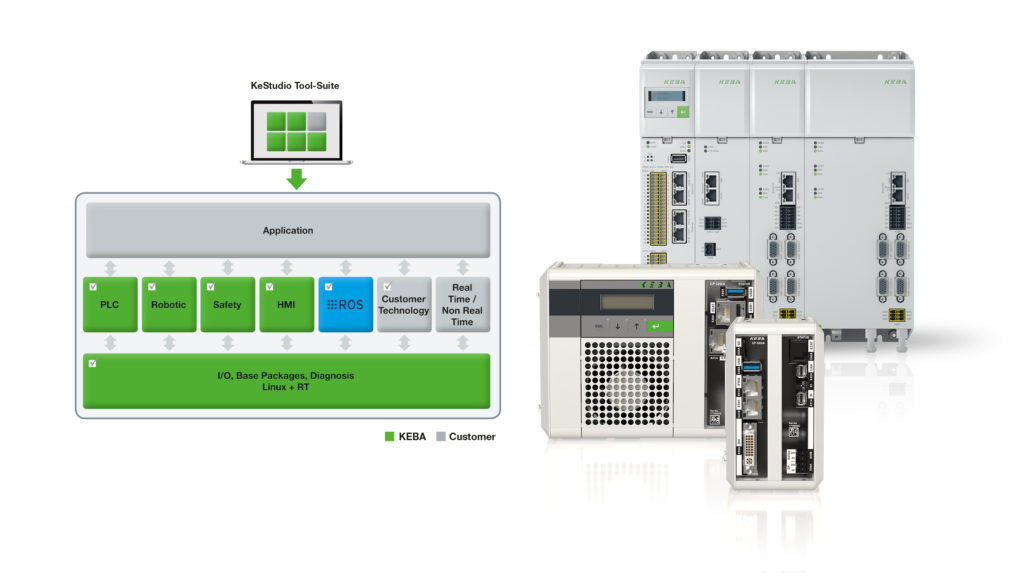Open source robotics framework used in industrial and non-industrial applications
Effective communication isn’t just important between humans. Communication between humans and machines, robots and machine controls, and applications and the cloud are all just as vital. In the field of robotics, effective universal communication is made easier when one universal robot language is spoken.
To accomplish this, SICK, Inc. and Austrian automation company, KEBA, are collaborating closely using the Robot Operating System (ROS), an open source robot management software. ROS provides the perfect universal language to gain more effective communication in robotics applications. The software can be used to program applications and control robots, while the language itself is shared and developed by experts all over the world.
One Universal Robot Language for the Robotics Industry

As an open source framework, ROS offers a growing variety of features. It can be used in both industrial and non-industrial robotics applications. The ROS community, which comprises of thousands of developers all over the world, provides a constant flow of new solutions. Alexander Barth, Sales Manager at KEBA, narrows ROS down to one simple formula: “It’s a give and take.”
Robotics applications are now more varied than ever before. Assembly lines of permanently installed robots are commonplace in industries like the automotive industry, which has now been joined by a profusion of small, flexible systems. Lightweight and mobile collaborative robots known as “cobots” are emblematic of this development.
In these fields, the trend is moving away from manufacturer-specific systems toward an open approach. It makes sense to work with standardized software interfaces—and across a huge bandwidth, from AGCs to six-axis robots.
An open source robotics platform provides the perfect stage for rapid penetration of these new markets. With ROS, SICK and KEBA look for and depend on innovations from the ROS community. With its KeMotion FlexCore control system and integrated ROS framework, KEBA offers a platform that delivers efficient solutions for all robotics applications.

A Sense of Community for Future Robotics Experts
“The ROS community not only makes sense in terms of collaboration—it’s fun as well!” Barth said.
According to experts, ROS is particularly suited for small- and medium-sized businesses, as it makes the integration of sensors significantly easier.
“We’ve been working with the entire range of SICK robotics products, like cameras and laser scanners, for decades,” Barth said. “Previously, integrating a sensor involved a huge amount of work. Now it’s all done by the community.”
With this level of work being done by the community across the globe, it becomes obvious that using one universal robot language will help to enhance innovations and continue developments in the field. It becomes easier to learn how to create new solutions and introduce young minds to the industry when a common language is used by all experts in the world.
“ROS is the perfect tool for newcomers to robotics,” said Thomas Stähler, SICK’s Senior Vice President for Factory Automation. “For us, it’s also the perfect way of gaining access to the young generation, whether in apprenticeships or at a university.”
Breaking New Ground on Cobot Use
Access to new generations is one thing, but ROS is also paving the way for completely new applications. The new flexibility of the cobot is increasingly permeating areas where extensive use of robots would have been unthinkable.
According to Barth, ROS will have an impact even on processes that don’t need to run in real time and that mostly rely on sensors and cameras. These include agricultural applications like sowing, weed removal, or harvesting. In addition, it can be used for processes that no longer need to be done by humans and require manual reworking. The new mobile cobots, especially those mounted on automated guided vehicle systems, are conquering new spheres of operation around the clock, in all areas of industrial automation.
With so many innovative thinkers and the use of a universal language, systems that were still prohibitively expensive just 10 years ago can today be brought online much more cheaply thanks to the community. And these solutions are built to suit the needs of the current world.
“In contrast to 10 years ago, we can now build robots for ourselves again,” Barth said.






